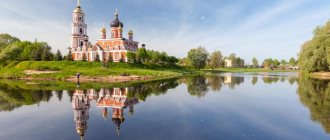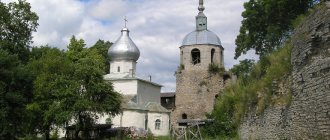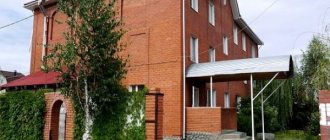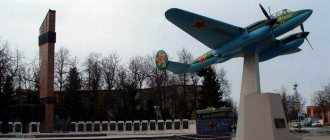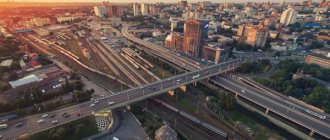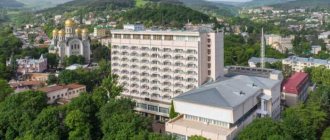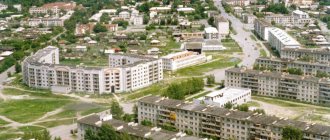About the difficult fate of kings and photographers. And about the city of Aksai.
This story began with a photograph not yet of the city of Aksai, but of the Aksai village, taken from the left bank of the Don in 1869.
On Meotis we started an investigation on the topic: where were the windmills visible in the picture. One of these mills is clearly visible to the left of the bell tower of the Trinity Church. Let me remind you that neither Uspenskaya nor Odigitrievskaya existed at that time. Now it's the other way around.
This mill is clearly visible on a wartime aerial photograph. Even the shadows of the blades can be seen.
They decided that this mill stood on the northwestern side of the intersection of Sovetskaya and Lunacharsky streets. This photo shows the intersection of Sovetskaya and Chicherin, and the mill was a little higher, at the next intersection.
But already in the middle of the argument, I became more interested in the question not about the location of the mill, but about the place from which the photograph was taken.
I took the already mentioned aerial photograph and drew a line on it from the mill and the bell tower to the probable point where the photographer stood.
I was surprised to find myself on Mezhonka Island.
In the photograph under discussion, a small channel is clearly visible in the foreground, separated from the main channel of the Don.
I found this photo of the island on the city administration website. Exactly, there is a lowland in its western part, which could well look like a channel in the picture.
And some buildings are visible approximately at the point where the photographer stood in 1869. Although, of course, a lot of time passed between 1869 and 1943.
And in a modern photograph, some ruins are visible in this part of the island. But there is no reason yet to connect them with the 19th century. And we must remember that the silhouette of the low sandy island has changed radically over time.
I started studying the history of the photograph. She turned out to be curious. It was made among many during the journey of the heir to the throne, the future Emperor Alexander III, to the south.
An entire photo album is dedicated to this journey. It is possible that this is the first of its kind in Russian history.
Here the august spouses are met at the train station in Novocherkassk.
For illustration, I selected the most striking portraits of the young spouses - the Tsarevich and the Tsarevna.
The story of the journey itself is as follows.
In 1865, the eldest son of Emperor Alexander II, Nicholas, died, whom his father had carefully prepared to rule the state. The title of Tsarevich passes to the youngest son, Alexander. And along with the title, Alexander Alexandrovich “inherits” his deceased brother’s fiancee, the pretty Danish princess Dagmara.
And Alexander II begins hastily to teach his youngest son how to govern the state.
The best scientists, historians and statesmen of that time are working with the Tsarevich. Alexander II understood his responsibility well and tried to prepare his son as much as possible for the heavy burden of the crown of the Russian Emperor.
In the photo, the future Alexander III and his wife Dagmara, Maria Fedorovna in Orthodoxy, surrounded by statesmen. 1869
Among the forms of training are, of course, trips around the country. On June 13, 1869, young people, Alexander was then 24 years old, and Maria was 21 years old, set off on a long journey to the south to become better acquainted with the people they were to govern.
I suspect that father Alexander II kicked his son and daughter-in-law into this trip. Less than a year had passed since the young couple had a son, Kolenka, who would later tragically end his life in the basement of the Ipatiev House in Yekaterinburg, and the emperor’s daughter-in-law gave birth to their second son, Sashenka, less than a month before the trip!
The Tsar-Liberator was harsh towards his children.
In this photo, Alexander Alexandrovich and Maria Fedorovna with three of their six children. The eldest, the future Emperor Nicholas II, stands on the left.
Be that as it may, the Tsarevich spouses traveled by train to Nizhny Novgorod along the road, showered with the love and gratitude of their subjects, then went down the Volga by steamer, took the train again and got to Kalach. There they again boarded the ship and sailed to our blessed land. Naturally, at all stops, basking in the glory, honor and attention of citizens of the empire of all classes.
In Taganrog they will board a ship for the third time and go to Crimea.
Imagine the “comfort” of the mid-19th century, albeit imperial. Numerous transfers, meetings, balls, receptions, parades, dinners, more transfers, trains, ships, horse-drawn carriages and horseback rides, and all this in a circle many times. And the fragile Danish princess, barely recovered from childbirth and separated from her child.
Girls, dream about anything, just not about the fate of a princess.
So, on July 31, the travelers reached the Aksai village, where they boarded a train and went to Novocherkassk. And on August 3rd we left Novocherkassk, passed through Aksai and stopped only in Rostov.
When did the court photographer manage to cross to Mezhonka, find a hill, and the photo was clearly taken from a high place, and take a picture with a huge camera with a tripod?
Hero!
The name of the photographer is known, this is Antonopulo Ivan Antonovich. On the mat of his photographs you can find the names of cities: Rostov, Taganrog, Sevastopol, Feodosia, Odessa.
On one of the Odessa sites I found this information about this photographer.
Ivan Antonopulo came to Odessa from Taganrog in 1871. Initially, his photographic workshop was located on the corner of Ekaterininskaya and Deribasovskaya streets, in the house of the Greek School. Here the photographer took portraits and group photographs of Odessa residents for more than ten years. It is interesting that on the mat of Antonopoulo’s early photographs (1874) there are no awards or court titles, and, moreover, there is no address.
Awards and medals were not long in coming: in the mid-seventies, having successfully photographed members of the families of the reigning persons of Europe, Antonopoulo was awarded the title of Court Photographer of Her Majesty the Greek Queen Helena and special awards of the Grand Duke of Russia, who became Emperor Alexander III in 1881.
This is a link to the site
And on my own behalf I will add that in one of the photographs of master Antonopoulo I found the title “court photographer”, although it is not clear of which court.
But there is no doubt that the photographer’s efforts were appreciated. And it is also certain that the motorcade of the family of the heir to the throne would not have waited for the photographer, who was crossing with an assistant on a boat to the island, then looking for or building an elevated place there, piling his camera on it and then rushing through the reeds with it in order to have time to cross back to the waiting train.
Smog!
One way or another, this photograph is a vivid memory of the difficult fate of kings and photographers. And about the past of the city of Aksay, of course.
Here is the entire album of photographs of that part of the trip that passed along the lower Don.

